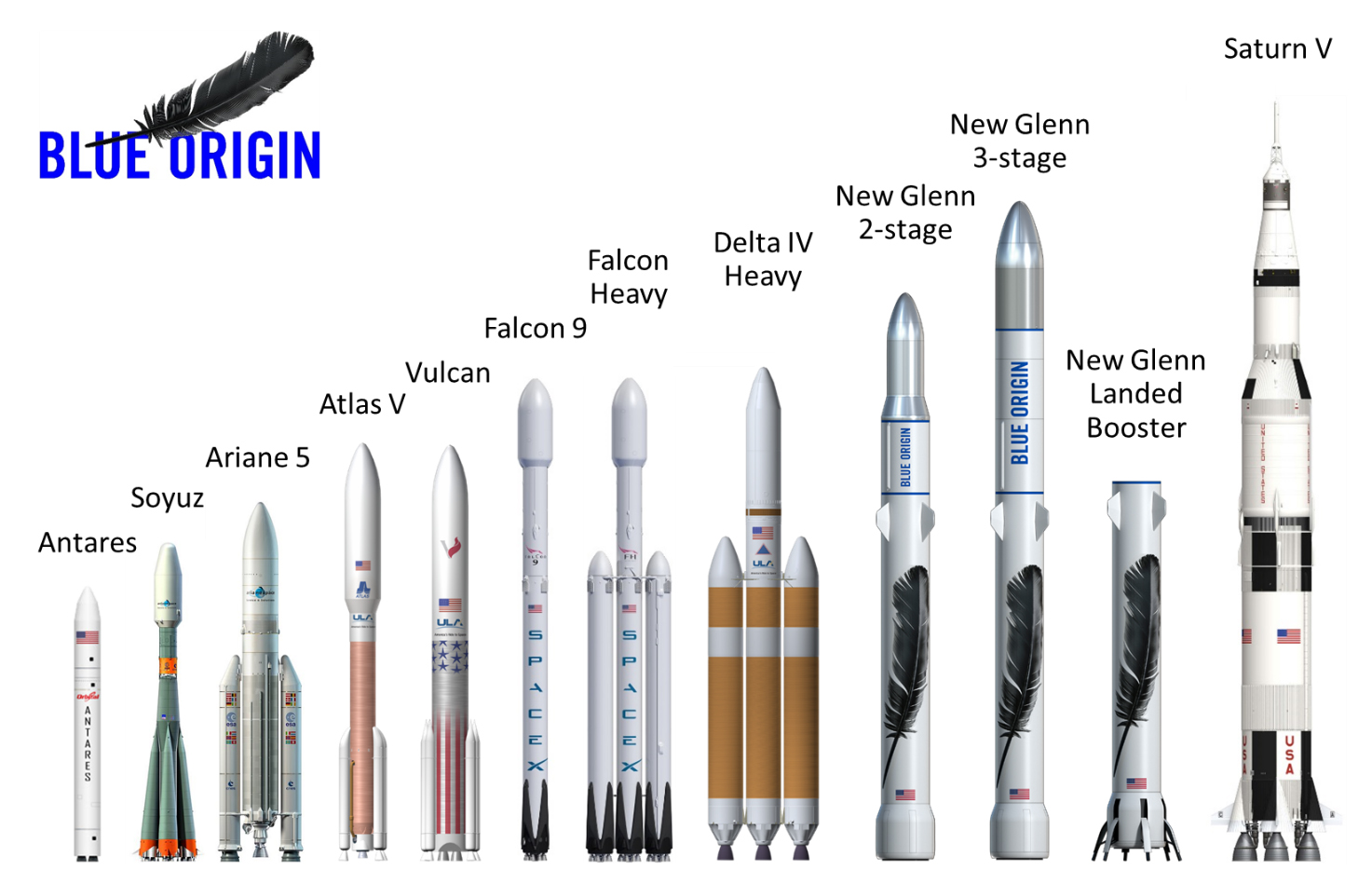Space exploration is becoming a lucrative domain for private aerospace companies (aka. the NewSpace industry). With opportunities for launch and resupply services growing, costs dwindling, and the cancellation of the
Space Shuttle Program
, private companies have been stepping up in recent years to provide their own launch vehicles and services to fill the gap.
Take Jeff Bezos, for example. Back in 2000, the founder of Amazon.com created
Blue Origin
to fulfill his lifelong dream of colonizing space. For years, Bezos and the company he founded have been working to produce their own fleet of reusable rockets. And as of the morning of Monday, Sept. 12th, he unveiled their newest and heaviest rocket - the
New Glenn.
Much like
SpaceX
, Blue Origin has been committed to the creation of reusable rocket technology. This was made clear with the development of the
*New Shepard*
suborbital rocket, which was unveiled in 2006. Named in honor of the first American astronaut to go into space (
Alan Shepard
), this rocket made its first flight in April of 2015 and has had an impressive record, nailing four out of five soft landings in the space of just over a year.
[caption id="attachment_127090" align="aligncenter" width="580"]
New Shepard comes in for a landing with drag brakes and landing gear deployed. Credit: Blue Origin.
[/caption]
With the
New Glenn
- named in honor of astronaut
John Glenn
, the first American astronaut to orbit the Earth - the company now intends to take the next step, offering launch services beyond Low-Earth Orbit (LEO) and for crewed missions. As
Bezos said
during the press conference:
According to Bezos, Blue Origin will have both a two-stage and three-stage variant of the rocket. Whereas the two-stage will provide heavier lift capacity to LEO, the three-stage will be able to reach further, and will the company's go-to when sending crewed missions into space. Work on the rocket began back in 2012, and the company hopes to make their first launch prior to 2020.
As Bezos said during the unveiling, this rocket carries on in the same tradition that inspired the creation of the
New Shepard
:
[caption id="attachment_121563" align="aligncenter" width="580"]
A United Launch Alliance (ULA) Delta IV rocket launching from Cape Canaveral Air Force Station, Fl, on July 23rd, 2015. Credit: Ken Kremer/kenkremer.com
[/caption]
The rocket will have a sea-level thrust of 1.746 million kg (3.85 million lbs), placing it ahead of the
which has a sea-level thrust of about 900,000 kg (2 million lbs) - but behind the 2.268 million kg (5 million lbs) of the
*Falcon Heavy*
. Both variants will be powered by BE-4 engines, which are also manufactured by Blue Origin. The third-stage also employs a single vacuum-optimized BE-3 engine that burns liquid hydrogen and liquid oxygen.
However, the most interesting facet of the
New Glenn
is the fact that it will be reusable, with its first stage providing braking thrust and deployable legs (similar to the
*Falcon 9*
). In creating a heavy lift rocket that employs a retrievable first-stage, Blue Origin has signaled its intent to give SpaceX a run for its money when it comes to the development of reusable rocket technology.
It is also likely to raise the company's profile, which has so far been limited to conducting sub-orbital research for NASA and dabbling in the space-tourism industry. But once the
New Glenn
is up and running, it is likely to begin securing contracts to provide resupply services the ISS, as well as contracts with companies and research institutions to place satellites in orbit.
[caption id="attachment_129985" align="aligncenter" width="580"]
The Falcon Heavy, once operational, will be the most powerful rocket in the world. Credit: spacex.com[/caption]
According to
*The Verge*
,
Bezos also hinted that his company has another project in mind - called the
New Armstrong
. While no details have been given just yet, the name of this rocket is a clear allusion to the
Moon Landing
, and hints that the company may have designs on possible moon missions in the coming decades.
This is an exciting time for the NewSpace industry. In the coming months, SpaceX is expected to conduct the first launch of the Falcon Heavy, which will be the most powerful rocket built in the US since the retirement of the Apollo program's
Saturn V
launcher. And if they keep to their current schedule, Blue Origin will be following this in a few years time with the launch of the largest rocket of the post-Apollo era.
Big rockets and big lift capacities can mean only thing: big things lie ahead of us!
Further Reading: ArsTechnica, The Verge, Blue Origin
 Universe Today
Universe Today
